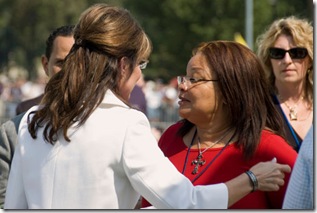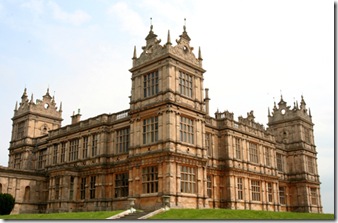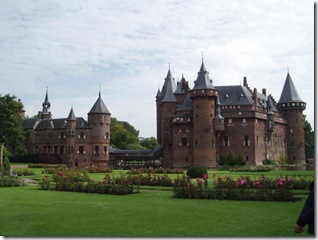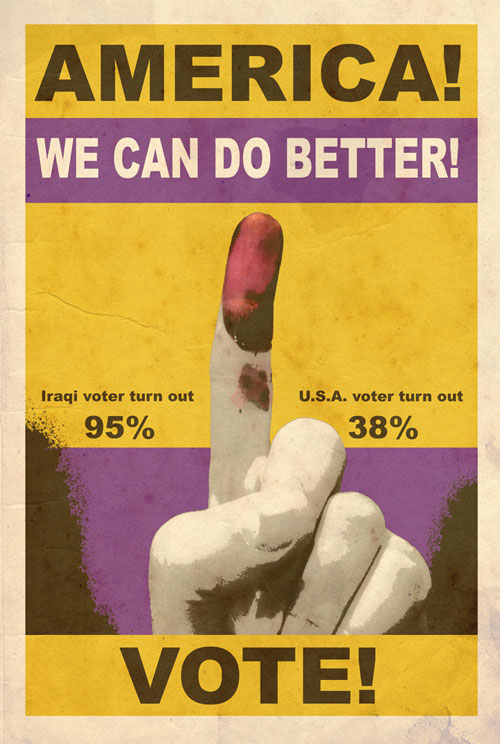en.wikipedia.org/wiki/Rothschild_family Five lines of the Austrian branch of the family were elevated into the Austrian nobility, being given hereditary baronies of the Habsburg Empire by Emperor Francis II in 1816. The British branch of the family was elevated into the British nobility by Queen Victoria. It has been argued that during the 19th century, the family possessed by far the largest private fortune in the world, and by far the largest fortune in modern history.
Unlike the old court Jews, the new kind of international firm the Rothschilds created was impervious to local attack. These Hep-Hep riots as they were called, included an assault on the Rothschild house in Frankfurt. It made no difference. Nor did a further attack during the 1848 revolution. The money was no longer there. It was paper, circulating through the world. The Rothschilds completed a process the Jews had been working on for centuries: how to immunize their lawful property from despoiling violence. Another essential part of Mayer Rothschild’s strategy for future success was to keep control of their businesses in family hands, allowing them to maintain full discretion about the size of their wealth and their business achievements. The practise initiated by the Rothschilds of having several brothers of a firm establish branches in the different financial centers was followed by other Jewish financiers, like the Bischoffsheims, Pereires, Seligmans, Lazards, and others, and these financiers by their integrity and financial skill obtained credit not alone with their Jewish confrères, but with the banking fraternity in general. By this means Jewish financiers obtained an increasing share of international finance during the middle and last quarter of the nineteenth century. The head of the whole group was the Rothschild family. Mayer Rothschild successfully kept the fortune in the family with carefully arranged marriages,including between first or second cousins, although by the later 19th century, almost all Rothschilds had started to marry outside the family, usually into the aristocracy or other financial dynasties.
Families by country: Rothschild banking family of Naples, Rothschild banking family of England, Rothschild banking family of Austria, Rothschild banking family of Germany,Rothschild banking family of France, Rothschild banking family of Switzerland
The Rothschilds already possessed a very significant fortune before the start of Napoleonic Wars (1803-1815). From London in 1813 to 1815, he was instrumental in the financing of the British war effort, in 1815 alone, the Rothschilds provided £9.8 million (in 1815 currency prices) in subsidy loans to Britain’s continental allies.
The basis for the Rothschild’s most famously profitable move was made after the news of British victory had been made public. Nathan Rothschild calculated that the future reduction in government borrowing brought about by the peace would create a bounce in British government bonds after a two year stabilisation, which would finalise the post-war re-structuring of the domestic economy. In what has been described as one of the most audacious moves in financial history, Nathan immediately bought up the government bond market, for what at the time seemed an excessively high price, before waiting two years, then selling the bonds on the crest of short bounce in the market in 1817 for a 40% profit. Given the sheer power of leverage the Rothschild family had at its disposal, this profit was an enormous sum.
Nathan Mayer Rothschild in 1818, he arranged a £5 million loan to the Prussian government, and the issuing of bonds for government loans formed a mainstay of his bank’s business. He gained a position of such power in the City of London that by 1825–6 he was able to supply enough coin to the Bank of England to enable it to avert a market liquidity crisis.
Rothschild family banking businesses pioneered international high finance during the industrialisation of Europe and were instrumental in supporting railway systems across the world and in complex government financing for projects such as the Suez Canal. The family bought up a large proportion of the property in Mayfair, London. Major businesses directly founded by Rothschild family capital include Alliance Assurance (1824) (now Royal & SunAlliance); Chemin de Fer du Nord (1845); Rio Tinto Group (1873); Société Le Nickel (1880) (now Eramet); and Imétal (1962) (now Imerys). The Rothschilds financed the founding of De Beers, as well as Cecil Rhodes on his expeditions in Africa and the creation of the colony of Rhodesia. From the late 1880s onwards, the family controlled the Rio Tinto mining company.
The Japanese government approached the London and Paris families for funding during the Russo-Japanese War. The London consortium’s issue of Japanese war bonds would total £11.5 million (at 1907 currency rates).
By the end of the century, the family owned, or had built, at the lowest estimates, over 41 palaces, of a scale and luxury perhaps unparalleled even by the richest Royal families. The soon to be British Prime Minister Lloyd George claimed, in 1909, that Lord Nathan Rothschild was the most powerful man in Britain.
Chateau de Ferrieres, the largest Chateau of the 19th century, was built in 1854 to house James Mayer de Rothschild, east of Paris. It is set in a 30 km² estate. There are two branches of the family connected to France. The first was son James Mayer de Rothschild, following the Napoleonic Wars, he played a major role in financing the construction of railroads and the mining business that helped make France an industrial power. James’ sons Gustave de Rothschild and Alphonse James de Rothschild continued the banking tradition and was the guarantor of the 5 billion in reparations demanded by the occupyingPrussian army in the 1870s Franco-Prussian War. James Mayer de Rothschild‘s other son,Edmond James de Rothschild was a leading proponent of Zionism. The group has €100bn of assets in 2008 and owns many wine properties in France (Château Clarke, Château des Laurets), in Australia or in South Africa. In 1961, the 35 year old Baron Edmond purchased the company Club Med, after he had visited a resort and enjoyed his stay. His interest in Club Med was sold off by the 1990s. In 1973, he bought out the Bank of California, selling his interests in 1984 before it was sold toMitsubishi Bank in 1985.
The second French branch was founded by Nathaniel de Rothschild (1812–1870). Born in London he was the fourth child of the founder of the British branch of the family, Nathan Mayer Rothschild (1777–1836). In 1850, Nathaniel Rothschild moved to Paris, ostensibly to work with his uncle, James Mayer Rothschild. However, in 1853 Nathaniel acquired Château Brane Mouton, a vineyard in Pauillac in the Gironde département. Nathaniel Rothschild renamed the estate, Château Mouton Rothschild and it would become one of the best known labels in the world. In 1868, Nathaniel’s uncle, James Mayer de Rothschild acquired the neighboring Chateau Lafite vineyard. By 1980, Guy de Rothschild’s business had an annual turnover of 26 billion francs (in the currency rates of 1980).[20] But then the Paris business suffered a near death blow in 1982 when the Socialist government ofFrançois Mitterrand nationalized and renamed it Compagnie Européenne de Banque.[needs citation] Baron David de Rothschild, then 39, decided to stay and rebuild, creating a new entity Rothschild & Cie Banque with just three employees and $1 million in capital. Today, the Paris operation has 22 partners and accounts for a significant part of the global business.
During World War II the Austrian branch had to surrender their bank to the Nazis and flee the country. Their Rothschild palaces, a collection of vast palaces in Vienna built and owned by the family, were confiscated, plundered and destroyed by the Nazis. The palaces were famous for their sheer size, and for their huge collections of paintings, armour, tapestries,statues (some of which were restituted to the Rothschilds by the Austrian government in 1999). All family members escaped the Holocaust, some of them moving to the United States, and only returning to Europe after the war. In 1999, the government of Austria agreed to return to the Rothschild family some 250 art treasures looted by the Nazis and absorbed into state museums after the war.
Some Rothschilds were supporters of Zionism, although other members of the family opposed the creation of the Jewish state. Baron Edmond James de Rothschild, James Jacob de Rothschild’s‘s youngest son was a patron of the first settlement in Palestine at Rishon-LeZion, and bought from Ottoman landlords parts of the land which now makes up present-day Israel.
The Rothschilds also played a significant part in the funding of Israel’s governmental infrastructure. James A. de Rothschild financed the Knesset building as a gift to the State of Israel and the Supreme Court of Israel building was donated to Israel by Dorothy de Rothschild. Since the end of the 19th century, the family has taken a low-key public profile, donating many of their most famous estates, as well as vast quantities of art, to charity, keeping full anonymity about the size of their fortunes, and eschewing conspicuous displays of wealth.[29] The family once had one of the largest private art collections in the world, and a significant proportion of the art in the world’s public museums are Rothschild donations which were sometimes, in the family tradition of discretion, donated anonymously.
A HISTORY OF THE NEW WORLD ORDER by David Allen Rivera
No other name has become more synonymous with the Illuminati than the Rothschilds. It is believed that the Rothschild family used the Illuminati as a means to achieving their goal of world-wide financial dominance. Mayer Amschel Rothschild (1743-1812) was born in Frankfurt-on-the-Main in Germany, the son of Moses Amschel Bauer, a banker and goldsmith. A few years after his father’s death, he worked as a (1) clerk in a Hanover bank, which was owned by the Oppenheimers. He became a (2) junior partner, and soon left to take over the business started by his father in 1750. He (3) bought and sold rare coins, and later succeeded in buying out several other coin dealers.
In 1769, he became a (4) court agent for Prince William IX of Hesse-Kassel, who was the grandson of George II of England, a cousin to George III, a nephew of the King of Denmark, and a brother-in-law to the King of Sweden. Soon Rothschild (5) became the middleman for big Frankfurt bankers like the Bethmann Brothers, and Rueppell & Harnier. After expanding his business to (6) antiques, wineries, and the importing of manufactured materials from England, the Rothschild family began to amass a sizable fortune.
Prince William inherited his father’s fortune upon his death in 1785, which was the largest private fortune in Europe. Some of this money had come from Great Britain paying for the use of 16,800 Hessian soldiers to stop the revolution in America, because the money was never given to the troops. In 1804, (7) the Rothschilds secretly made loans to the Denmark government, on behalf of Prince William.
In June, 1806, when Napoleon’s troops pushed their way into Germany, (8) Prince William fled to Denmark, leaving his money with Mayer Rothschild. History tells us that Rothschild secretly buried William’s ledgers, which revealed the full extent of his wealth, a list of debtors and the interest required from them, and 600,000 pounds ($3,000,000), to keep Napoleon from confiscating it.Buderus von Carlhausen (Carl Buderus), the Treasury official who handled William’s finances, was given ‘power of attorney,’ and he in turn made Rothschild his chief banker, responsible for collecting the interest on the royal loans. Napoleon announced that all debts being paid to Prince William, were to go to the French Treasury, and offered a 25% commission on any debts that he would collect. Rothschild refused.
Developing circumstances soon allowed the Rothschilds to formulate a plan which would guarantee them the financial control of Europe, and soon the world. It began with taking advantage of the outcome of the Battle of Waterloo, which was fought at La-Belle-Alliance, seven miles south of Waterloo, which is a suburb of Brussels, Belgium. Early in the battle, Napoleon appeared to be winning, and the first secret military report to London communicated that fact. However, upon reinforcements from the Prussians, under Gebhard Blucher, the tide turned in favor of Wellington. On Sunday, June 18, 1815, Rothworth, a courier of Nathan Rothschild, head of the London branch of the family, was on the battlefield, and upon seeing that Napoleon was being beaten, went by horse to Brussels, then to Ostende, and for 2,000 francs, got a sailor to get him to England across stormy seas. When Nathan Rothschild received the news on June 20th, he informed the government, who did not believe him. So, with everyone believing Wellington to be defeated, Rothschild immediately began to sell all of his stock on the English Stock Market. Everyone else followed his lead, and also began selling, causing stocks to plummet to practically nothing. At the last minute, his agents secretly began buying up the stocks at rock-bottom prices. On June 21, at 11 PM, Wellington’s envoy, Major Henry Percy showed up at the War Office with his report that Napoleon had been crushed in a bitter eight hour battle, losing a third of his men. This gave the Rothschild family complete control of the British economy, and forced England to set up a new Bank of England, which Nathan Rothschild controlled.
However, that wasn’t the only angle he used to profit from the Battle of Waterloo. Mayer Amschel Rothschild sent some of William’s money to his son Nathan in London, and according to the Jewish Encyclopedia: “Nathan invested it in 800,000 pounds of gold from the East India Company, knowing it would be needed for Wellington’s peninsula campaign. He made no less than four profits: (1) on the sale of Wellington’s paper (which he bought at 50¢ on the dollar); (2) on the sale of gold to Wellington; (3) on its repurchase; and (4) on forwarding it to Portugal. This was the beginning of the great fortune.”
After Napoleon’s defeat, Prince William returned to resume his rule. Buderus was made a Baron, and the Rothschilds were the richest bankers in Europe.
In 1817, France, in order to get back on their feet again, secured loans from a French banking house in Ouvrard, and from the Baring Brothers in London. The Rothschilds saw their chance to get a firm grip on the French economy, and on October, 1818, Rothschild agents began buying huge amounts of French government bonds, which caused their value to increase. On November 5th, they were dumped on the open market, creating a financial panic as their value declined. Thus, the Rothschilds gained control of France.
Mayer Rothschild had established banks in England, France, and Germany. His sons, who were made Barons of the Austrian Empire, were set up to continue and expand his banking empire. Amschel Mayer Rothschild 1773-1855, in 1838 said: “Permit me to issue and control the money of a nation, and I care not who makes its laws.”He was in charge of the bank in Frankfurt, Germany, which was known as M. A. Rothschild and Sons (which closed in 1901, after the deaths of Mayer Karl and his brother, Wilhelm Karl, the sons of Karl Mayer Rothschild). Salomon Mayer Rothschild (1774-1855) was the head of the bank in Vienna, Austria, known as S. M. Rothschild and Sons (which was closed during World War II after the Nazi occupation). Nathan Mayer Rothschild 1777-1836, once said: “I care not what puppet is placed upon the throne of England to rule the Empire on which the sun never sets. The man who controls Britain’s money supply controls the British Empire, and I control the British money supply.”
This was the beginning of the House of Rothschild, which controlled a fortune estimated to be well over $300,000,000. Soon the Rothschilds spanned Europe with railroads, invested in coal and ironworks, financed England’s purchase of the Suez Canal, paid for oil exploration in Russia and the Sahara Desert, financed the czars of Russia, supported Cecil Rhodes’ diamond operations, aided France in creating an empire in Africa, financed the Habsburg monarchs, and saved the Vatican from bankruptcy. In USA, through their American and European agents, they helped finance Rockefeller’s Standard Oil, Carnegie Steel, and Harriman’s Railroad. Werner Sombart, in his book The Jews and Modern Capitalism, said that from 1820 on, it was the “age of the Rothschild” and concluded that there was “only one power in Europe, and that is Rothschild.” In 1913, the family fortune was estimated to be over two billion dollars.
After Mayer Rothschild died on September 19, 1812, his will spelled out specific guidelines that were to be maintained by his descendants:
1) All important posts were to be held by only family members, and only male members were to be involved on the business end. The oldest son of the oldest son was to be the head of the family, unless otherwise agreed upon by the rest of the family, as was the case in 1812, when Nathan was appointed as the patriarch.
2) The family was to intermarry with their own first and second cousins, so their fortune could be kept in the family, and to maintain the appearance of a united financial empire. For example, his son James (Jacob) Mayer married the daughter of another son, Salomon Mayer. This rule became less important in later generations as they refocused family goals and married into other fortunes.
3) Rothschild ordered that there was never to be “any public inventory made by the courts, or otherwise, of my estate … Also I forbid any legal action and any publication of the value of the inheritance.”
American and British Intelligence have documented evidence that the House of Rothschild, and other International Bankers, have financed both sides of every war, since the American Revolution. Financier Haym Salomon, who supported the patriots during the American Revolution, then later made loans to James Madison, Thomas Jefferson, and James Monroe, was a Rothschild agent. As explained earlier, during the Napoleonic Wars, one branch of the family funded Napoleon, while another financed Great Britain, Germany, and other nations. Their boldest maneuver came prior to the Civil War.
The Rothschilds operate out of an area in the heart of London, England, the financial district, which is known as ‘The City,’ or the ‘Square Mile.’ All major British banks have their main offices here, along with branch offices for 385 foreign banks, including 70 from the United States. It is here that you will find the Bank of England, the Stock Exchange, Lloyd’s of London, the Baltic Exchange (shipping contracts), Fleet Street (home of publishing and newspaper interests), the London Commodity Exchange (to trade coffee, rubber, sugar and wool), and the London Metal Exchange. It is virtually the financial hub of the world.
Positioned on the north bank of the Thames River, covering an area of 677 acres or one square mile (known as the “wealthiest square mile on earth”), it has enjoyed special rights and privileges that enabled them to achieve a certain level of independence since 1191. In 1215, its citizens received a Charter from King John, granting them the right to annually elect a mayor (known as the Lord Mayor), a tradition that continues today. Both E. C. Knuth, in his book Empire of the City, and Des Griffin, in his book Descent into Slavery, stated their belief that ‘The City’ is actually a sovereign state, much like the Vatican, and that since the establishment of the privately owned Bank of England in 1694, ‘The City’ has actually become the last word in the country’s national affairs, with Prime Minister, Cabinet, and Parliament becoming only a front for the real power. According to Knuth, when the queen enters ‘The City,’ she is subservient to the Lord Mayor (under him, is a committee of 12-14 men, known as ‘The Crown’), because this privately-owned corporation is not subject to the Queen, or the Parliament.
There seems to be little doubt that the Rothschilds continue to influence the world economy, and it is known that they are squarely behind the movement to unite all the western European nations into a single political entity, which is just another step towards one-world government.
By Alex Imreh - http://www.facebook.com/alex.imreh – Originally Posted on 03.01.2011
Related:
A Cornucopia of Corruption and Treason… *Multiple Articles Within*
Naming Names… Your Real Government
America’s Ruling Class and the Perils of Revolution
UN Ordered Depopulation of 3-Billion People by Food Malnutrition Has Started – PBSpecial Report
Video: Hitler Was a Rothschild Controlled Jew (Kind of a Soros Thing?) - 1 of 12 – Alex Jones – 2010-08-25
























outstanding work I appreciate the time and effort you have put into your research.
ReplyDeleteI am currently researching in depth the subject of the Rothschild's and am struggling through some of the grey areas such as the Hitler motivation. It is arguable the the holocaust was a culling of the herd used to motivate the colonization of Israel. But the American Intelligence statis quo that Hitler was motivated by revenge for the infedility of his Grandmother can't be discarded for it has merit. Hitler was a pretty smart guy and the fact that if it wasn't for her infedility neither he or his father would exist must be taken into consideration.
Leslie Bruce Irwin author "Socates Weeps as Plato Grins"